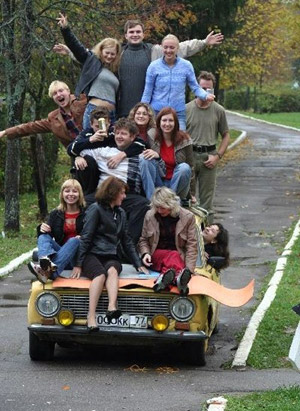 Ever heard of Clif Bar & Company? Most people associate this name with the nutritious and delicious Clif Bars we find in our local grocery stores. However, what many don't know is that this company is also dedicated toward helping the environment through creative and interesting ways.
Ever heard of Clif Bar & Company? Most people associate this name with the nutritious and delicious Clif Bars we find in our local grocery stores. However, what many don't know is that this company is also dedicated toward helping the environment through creative and interesting ways. Cool Tags, "renewable wind energy credits that offset CO2 emissions," cost $2 each. Those $2 is then invested by Clif Bar into NativeEnergy's Windbuilder's Program. According to the Clif Bar & Company website, "Each Cool Tag keeps an estimated 300 pounds of carbon dioxide out of the air. (That’s about how much you would generate driving 300 miles in an average car.)" Unfortunately, 25% of the CO2 emissions in the world is produced by America alone ("Environmental..."). That is quite a large amount considering there are over 100 other countries to take into account.
Interested in participating in this global cooling campaign with Clif Bar & Company? Then go here and check it out! :]
 Now I am an avid Clif Bar eater, but what attracts me to these energy-filled snacks so much is that they promote sustainability with their packaging. Clif Bar & Company have teamed up with TerraCycle, a company that creates eco-friendly products from non-recycleable materials, to reduce the amount of energy bar wrappers that end up in landfills.
Now I am an avid Clif Bar eater, but what attracts me to these energy-filled snacks so much is that they promote sustainability with their packaging. Clif Bar & Company have teamed up with TerraCycle, a company that creates eco-friendly products from non-recycleable materials, to reduce the amount of energy bar wrappers that end up in landfills.  They've named it the "Wrapper Brigade Program" as it "allows schools, offices, community organizations, and even individuals to earn money for charity by collecting used wrappers" because "For every wrapper the Brigade receives, they will donate 2 cents to a nonprofit of the collector’s choice. The wrappers then will be woven into strong material, and made into eco-chic products" ("Sustainability"). Hopefully some of you are inspired to get involved in this program, and if so then check out their website here.
They've named it the "Wrapper Brigade Program" as it "allows schools, offices, community organizations, and even individuals to earn money for charity by collecting used wrappers" because "For every wrapper the Brigade receives, they will donate 2 cents to a nonprofit of the collector’s choice. The wrappers then will be woven into strong material, and made into eco-chic products" ("Sustainability"). Hopefully some of you are inspired to get involved in this program, and if so then check out their website here.  Now I used to take my Clif Bar wrappers down to Sports Basement where they had a bin specifically marked for them. Unfortunately, this was a limited time deal as I ended up finding myself with over 50 wrappers and nowhere to take them. I was lucky enough to learn that Trader Joe's will take my wrappers and place them in a baler which will compress these items and keep them from winding up in a landfill. If this option isn't available to you, then try to check if there's a Clif Headquarters near you. Taking your wrappers to them specifically will ensure that they get recycled rather than adding to our Earth's landfills which is always a plus! :D
Now I used to take my Clif Bar wrappers down to Sports Basement where they had a bin specifically marked for them. Unfortunately, this was a limited time deal as I ended up finding myself with over 50 wrappers and nowhere to take them. I was lucky enough to learn that Trader Joe's will take my wrappers and place them in a baler which will compress these items and keep them from winding up in a landfill. If this option isn't available to you, then try to check if there's a Clif Headquarters near you. Taking your wrappers to them specifically will ensure that they get recycled rather than adding to our Earth's landfills which is always a plus! :D Hopefully this blog's highlight on Clif Bar & Company opened some of you up to their ethical practices which deserve to be recognized by the general public. Perhaps now you may find yourself supporting them and our environment by purchasing a Cool Tag or by locating a nearby Headquarters to recycle your wrappers as opposed to throwing them out. Whatever your decision, I hope it's a positive one for not only our Earth's well-being, but for the rest of the human race as well!
Peace&Love,
Dr. Green T
Works Cited:
"Cool Tags." Clif Bar & Company. CLIF BAR Family Foundation, Web. 28 Dec 2009. http://www.clifbar.com/soul/cool_tags/.
"Environmental Statistics." 2009. Nation Master, Web. 28 Dec 2009. http://www.nationmaster.com/red/pie/env_co2_emi-environment-co2-emissions.
"Sustainability." Clif Bar & Company. CLIF BAR Family Foundation, Web. 28 Dec 2009. http://www.clifbar.com/soul/sustainability/.













































